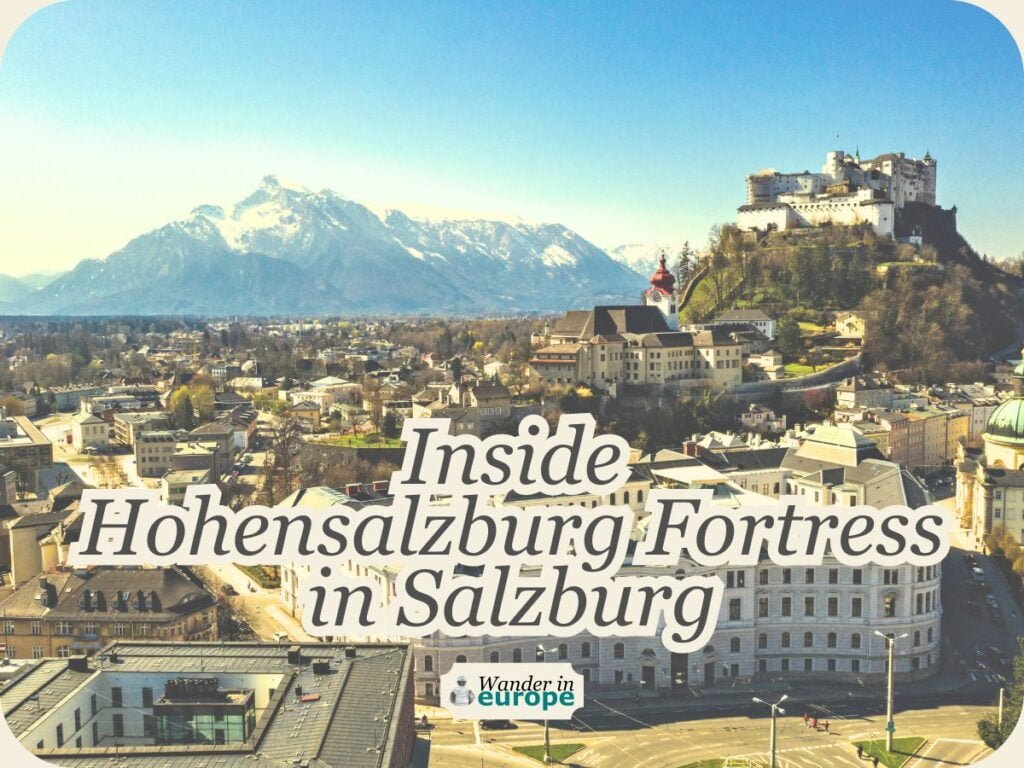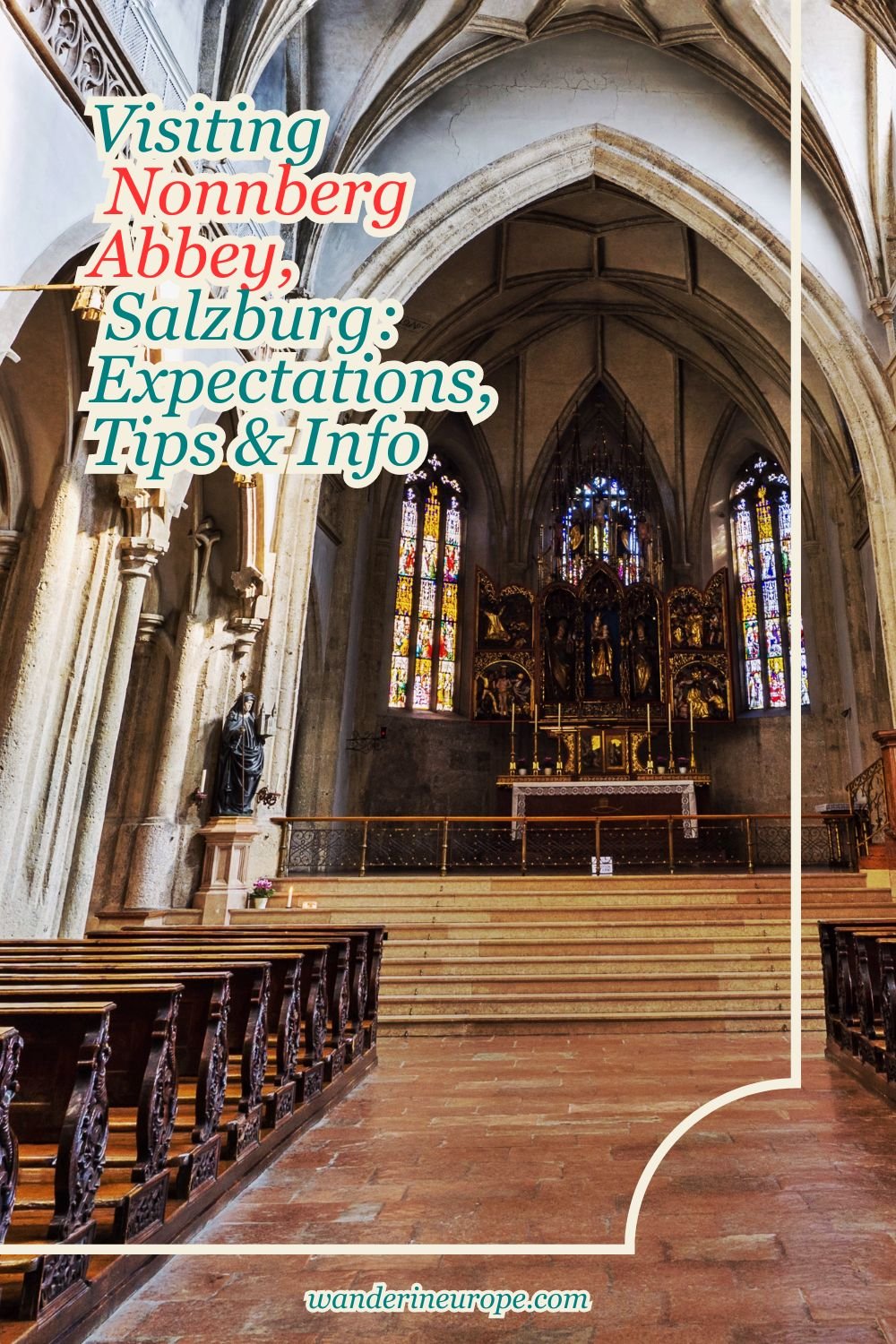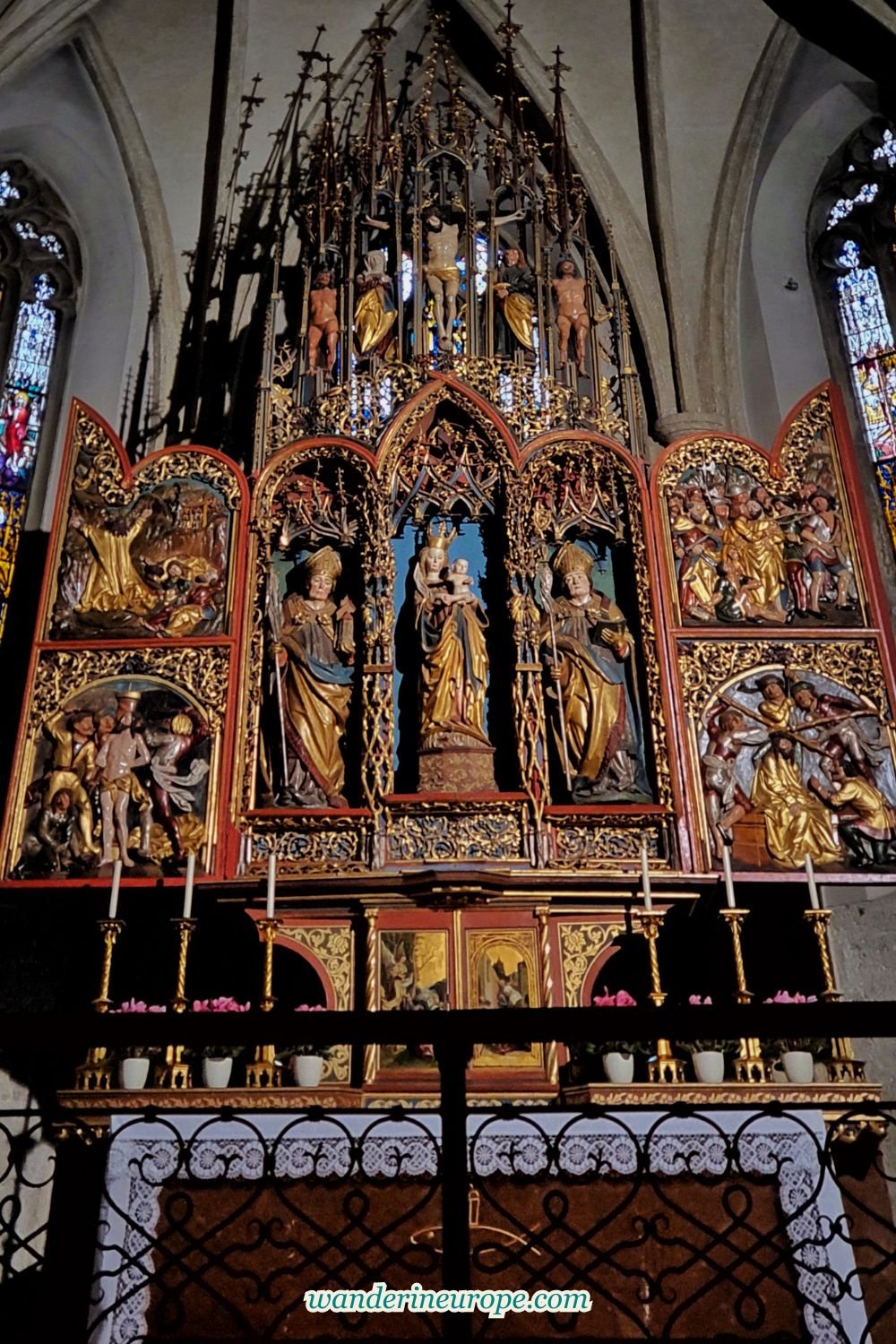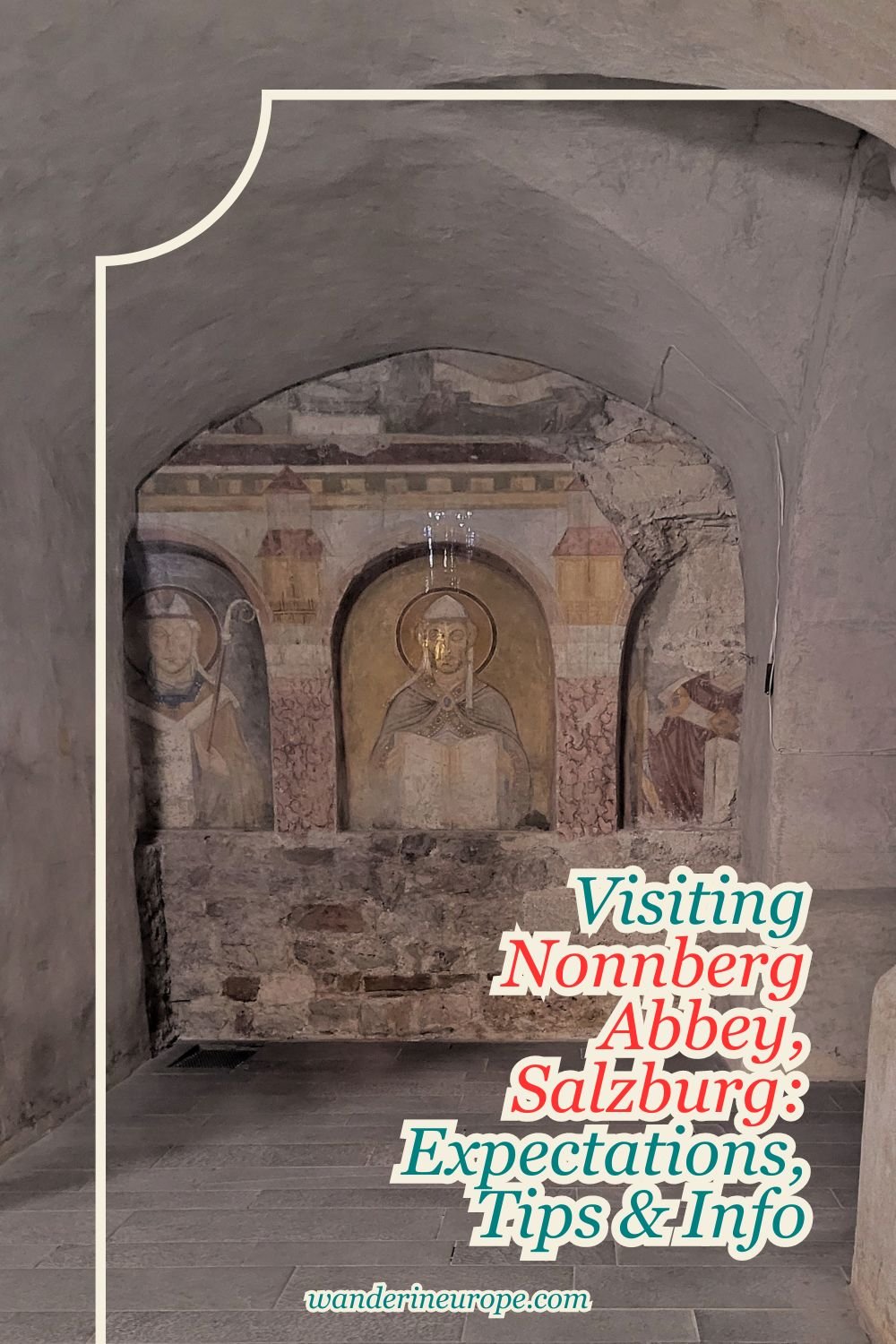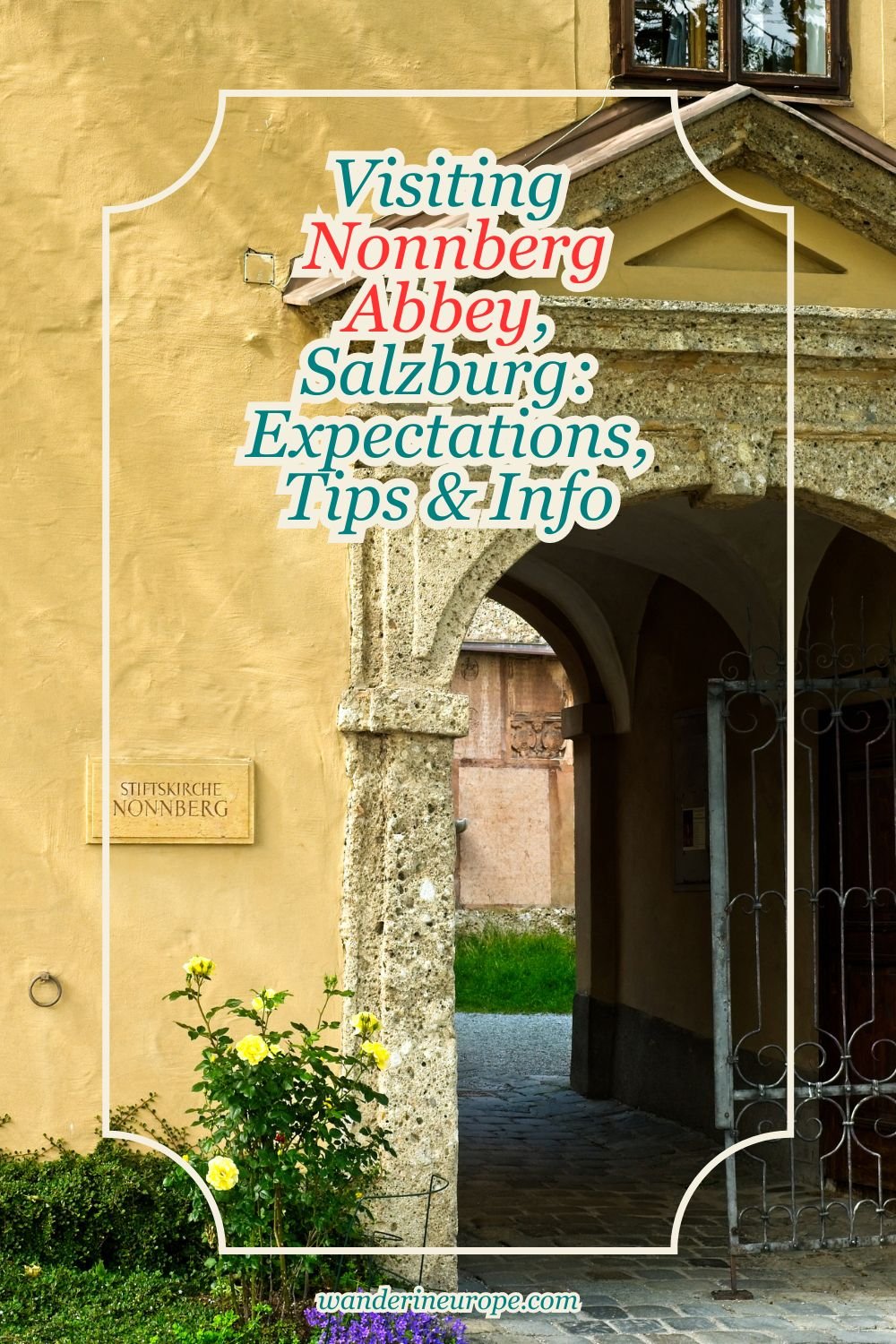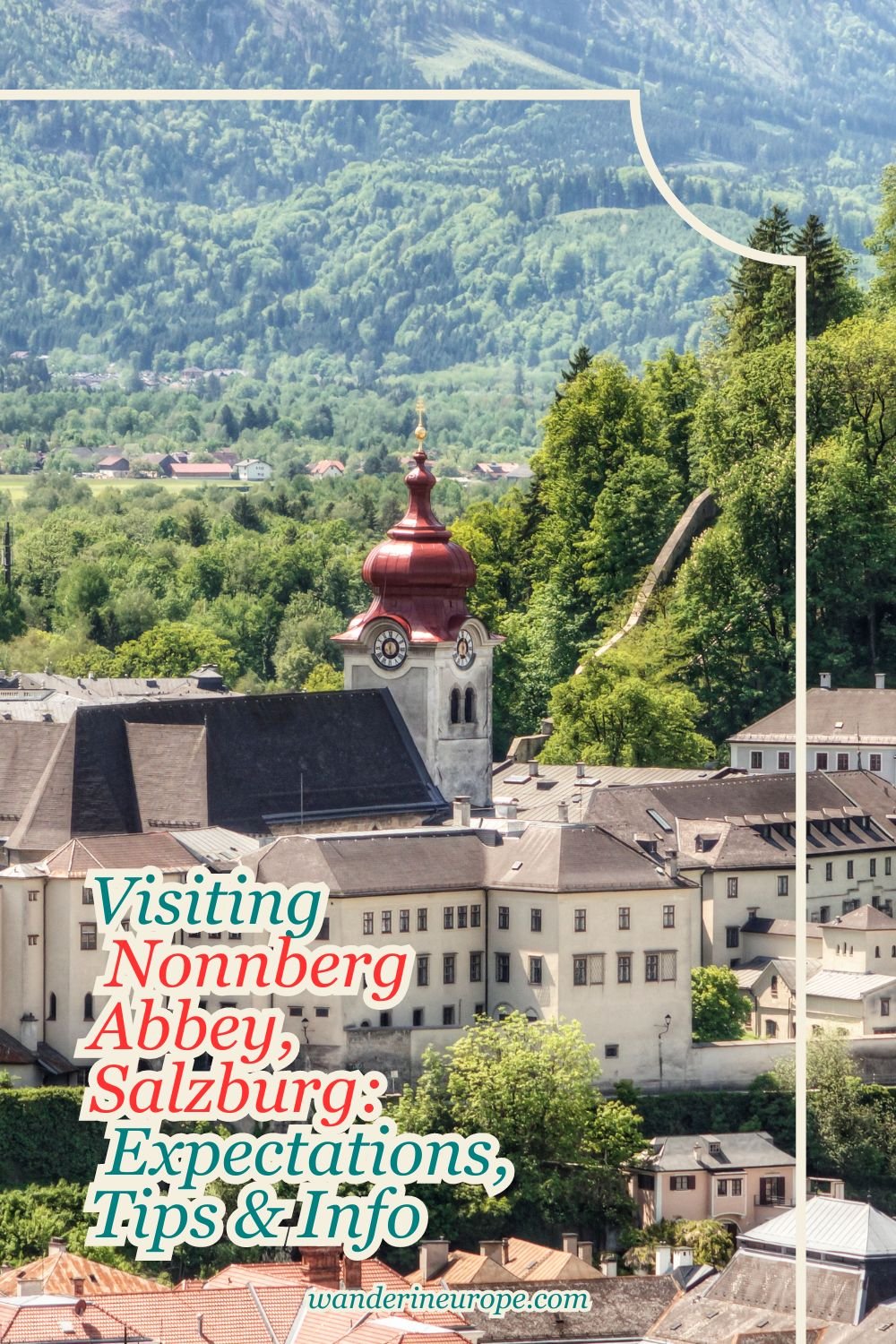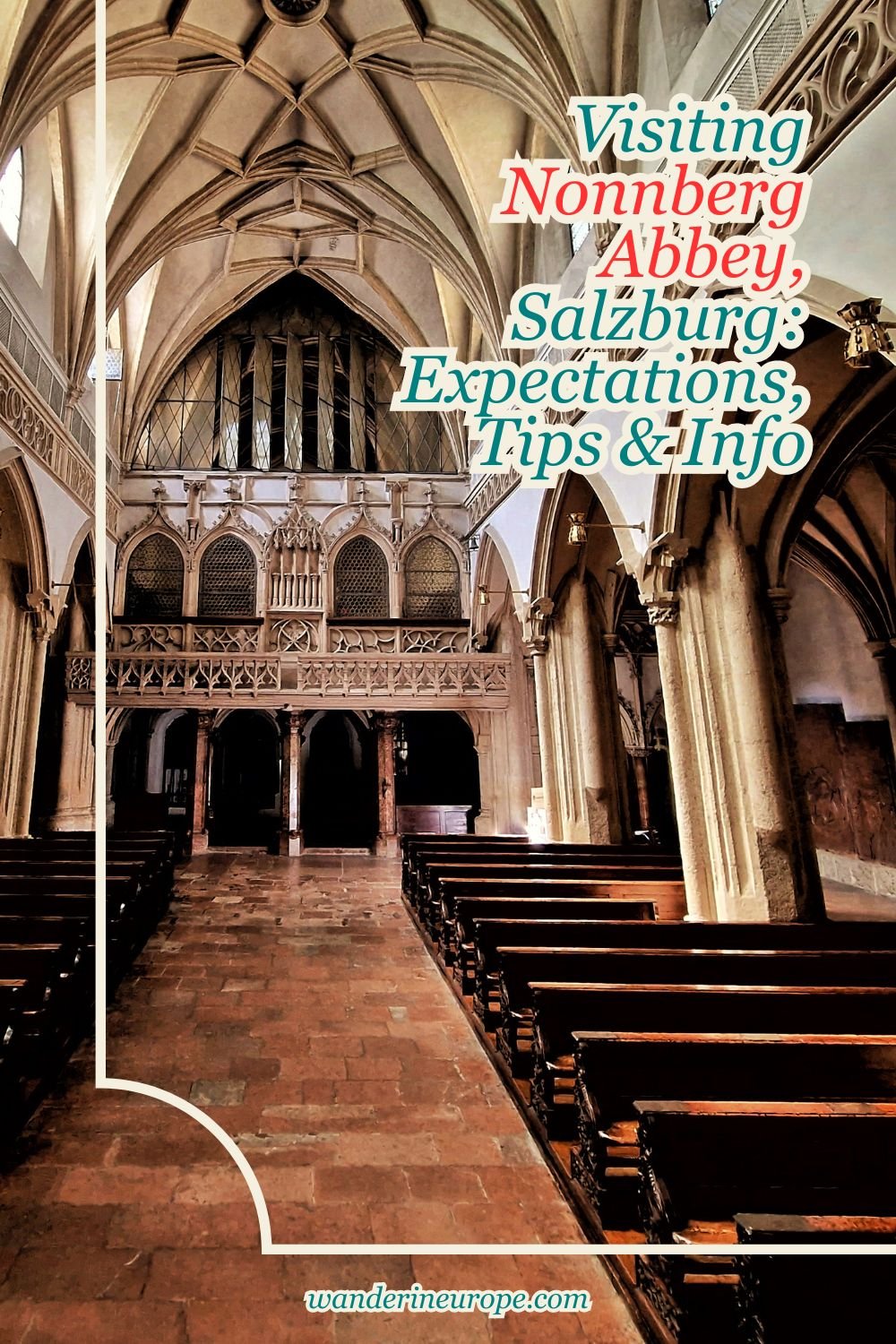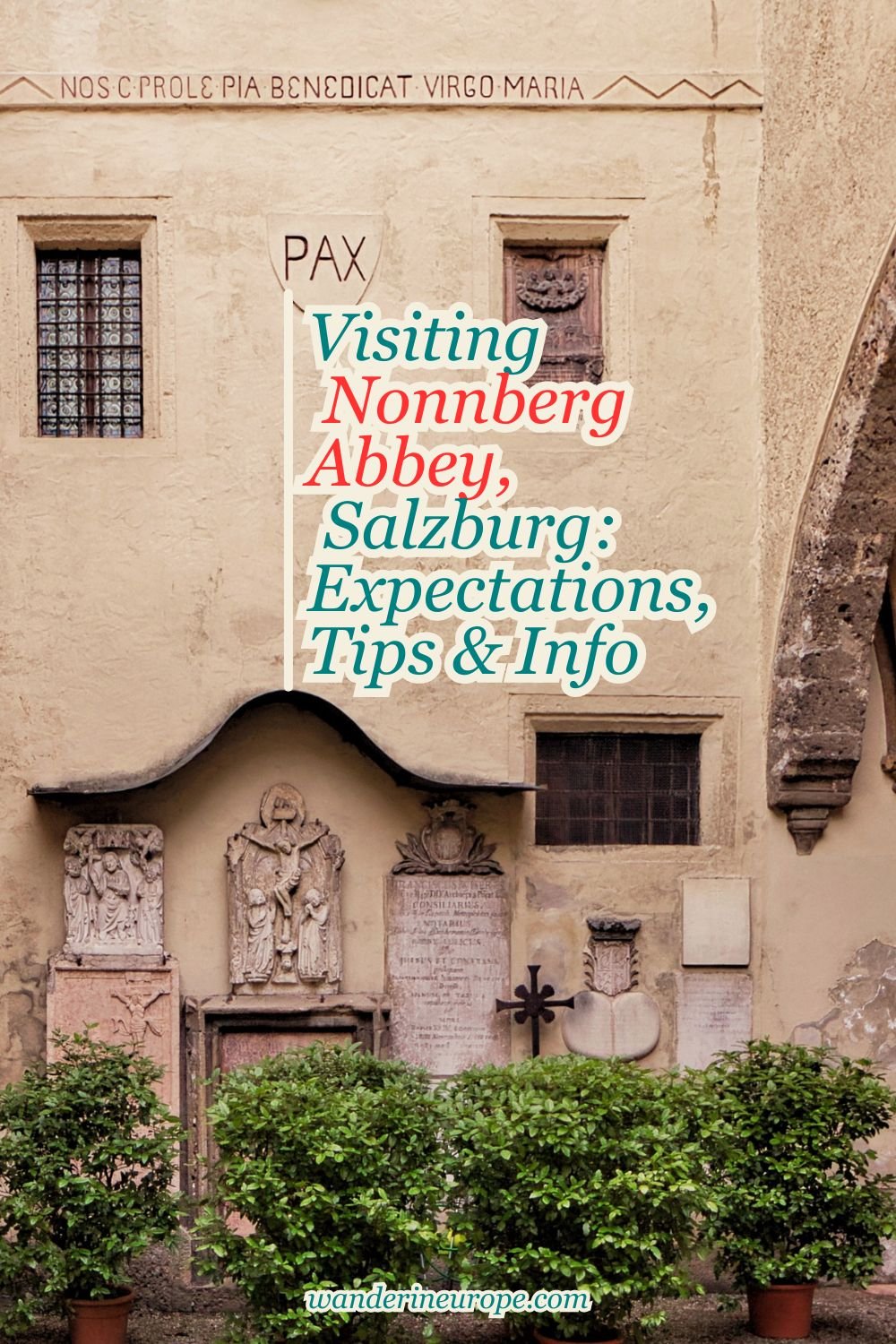Visiting Nonnberg Abbey, Salzburg: Expectations, Tips & Info
WanderInEurope is reader-supported. Affiliate links and ads help us keep creating useful content for you.
While exploring Salzburg, I came across several historical landmarks and architectural sites. One place I find worth seeing, especially for a self-guided tour of Old Town Salzburg, is Nonnberg Abbey. Its church may not be as grand as some of Europe’s famous cathedrals, but it offers a unique glimpse into cultural heritage—and it’s completely free to visit.
If you go early in the morning, you might catch the nuns singing Gregorian Chants, which, combined with the abbey’s centuries-old architecture, creates a truly moving experience. Let me share everything I learned about Nonnberg Abbey, along with some useful tips!

Expectations
As soon as you arrive at the entrance of Nonnberg Abbey, you’ll be able to quickly check off your goal of seeing the filming location of the Sound of Music: the gate. Don’t miss out on the full experience — be sure to step inside the abbey. The main church, gardens, and cemetery are all open to the public and offer a peaceful and serene experience as you wander through them.

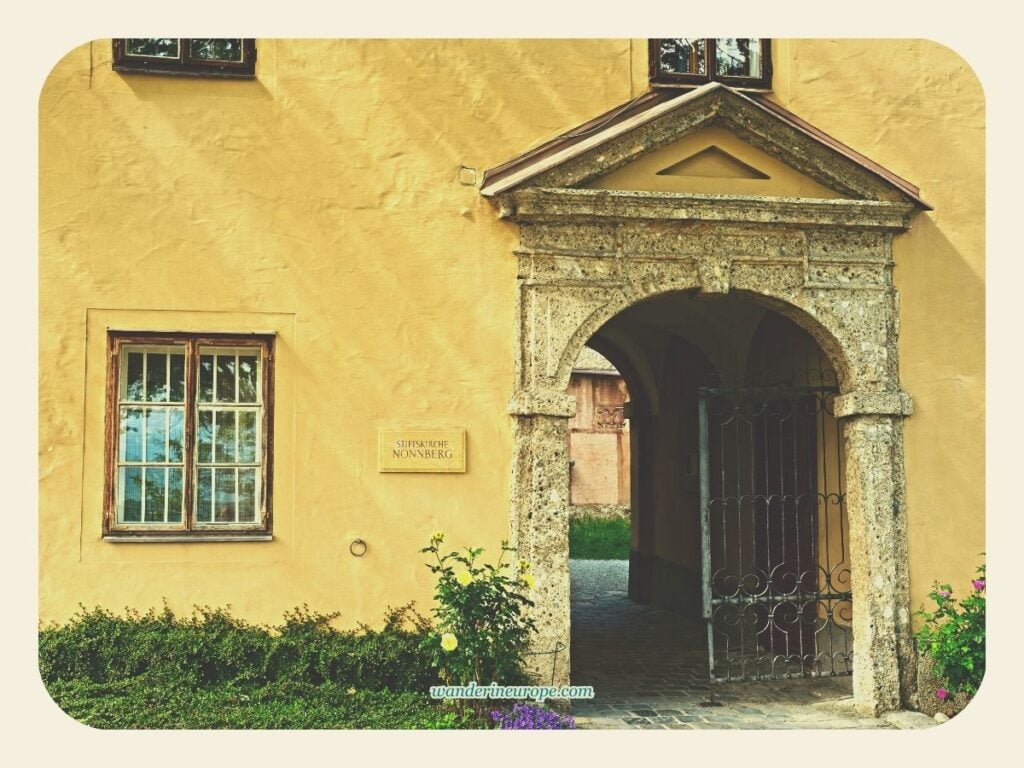
The entrance and the Sound of Music’s filming location in Nonnberg Abbey 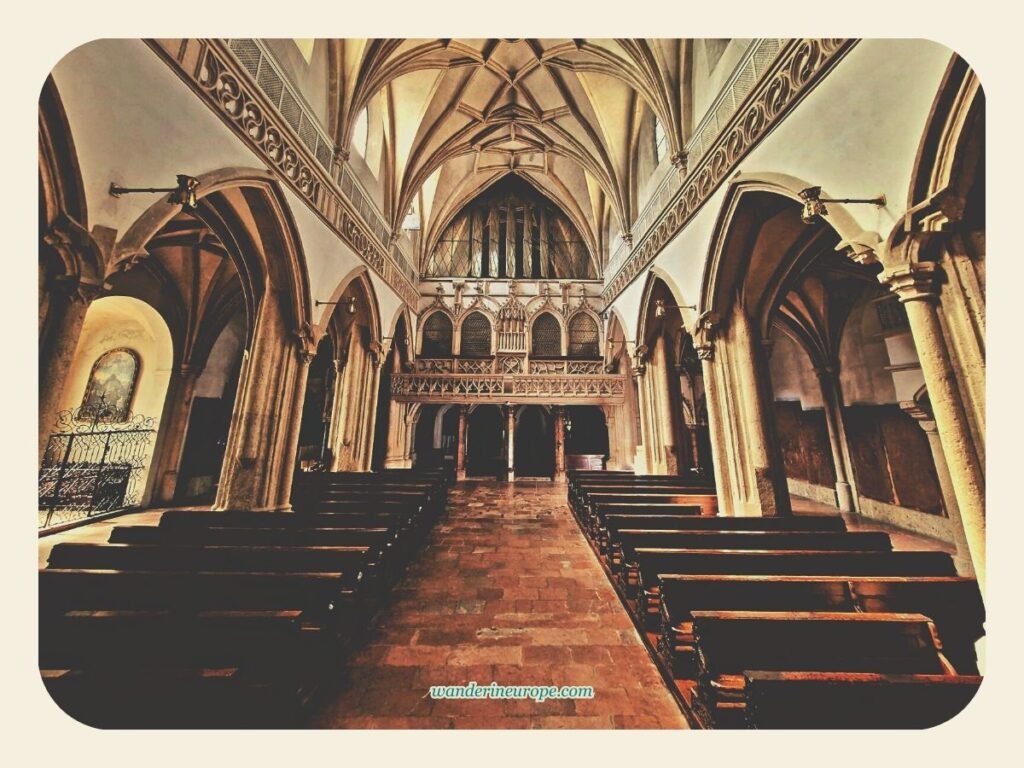
Gorgeous Gothic elements at the back of the church of Nonnberg Abbey 
The interior of Nonnberg Abbey Church facing the altar 
The intricate altar and the ancient frescoes of Nonnberg Abbey Church 
Ornate wrought iron crosses of Nonnberg Abbey’s graveyard 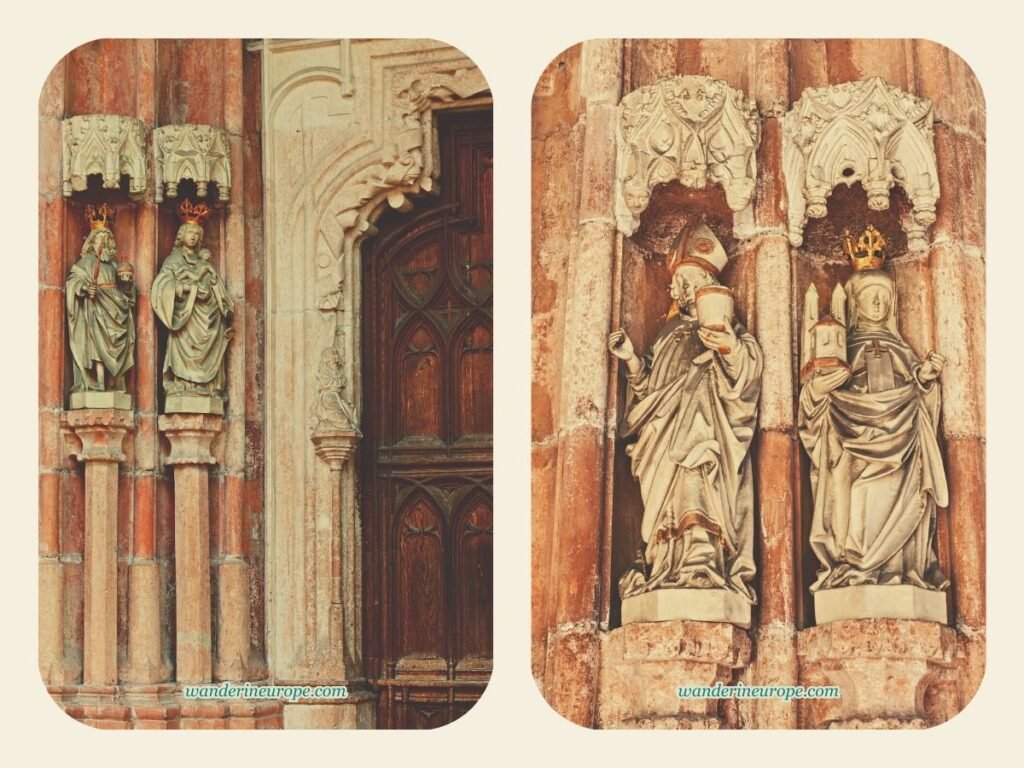
Gothic decorations of the old oak door – the statues of the saints who founded Nonnberg Abbey 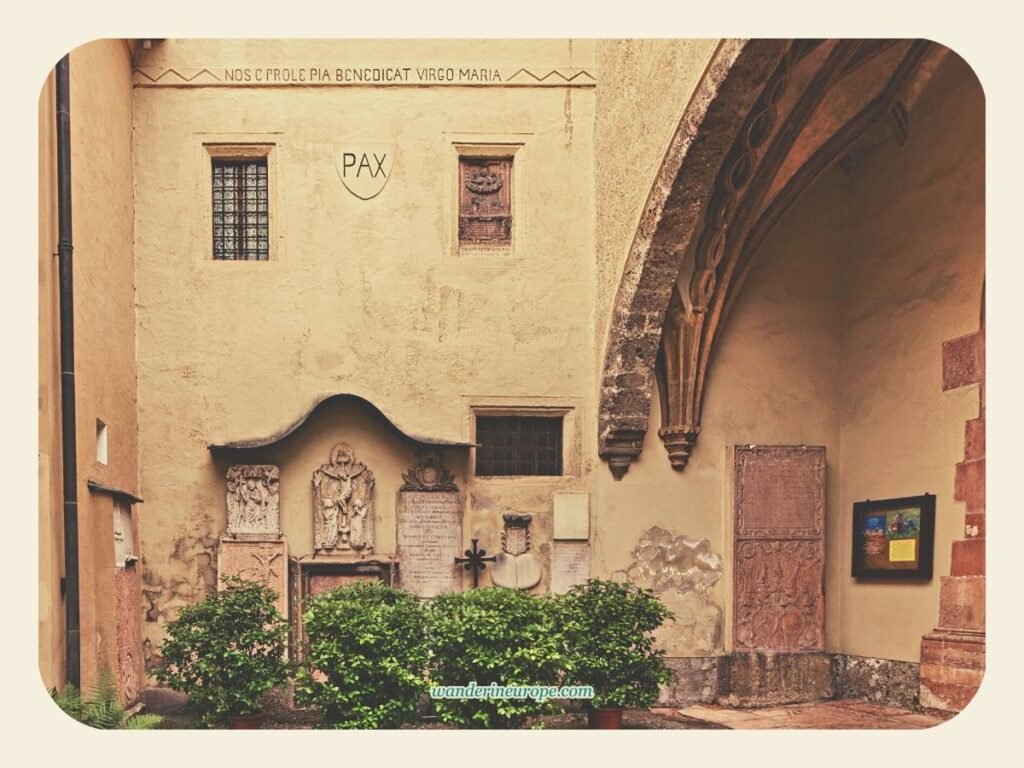
Different religious artworks between Nonnberg Abbey’s gate and church’s portal
Look here: Great Salzburg Activities Without Spending Over $100 (opens in a new tab)
The Musical Experience
Of all the experiences to be had at Nonnberg Abbey, the most special is the church music and the singing of the nuns. However, you’ll need to rise early to hear it. The nuns sing every morning at 6:45 am. In Sundays and public holidays, however, they also sing at 7 in the evening.
What’s the reason why hearing the nuns in the Nonnberg Abbey singing is a special experience?
Nonnberg Abbey has a long tradition of church music, with a focus on Gregorian chant. It is known for its sound beauty, especially during May devotions. The choir women practice this monophonic, unaccompanied liturgical singing according to the school founded by the French Benedictine Abbey of St. Pierre de Solesmes. They sing the daily changing chants and antiphons of the Graduale Romanum and the Antiphonale Monasticum with organ accompaniment.
It’s a living tradition of this early church, another musical treasure of the musical city of Salzburg.
Visiting Information
As you might have read previously, while Nonnberg Abbey welcomes visitors, not all areas of the monastic compound are open to the public. The nuns still reside in the monastery, so visitors are only permitted to explore the church, garden, and cemetery. Entry is free, however, you might want to bring 50 cents to enable the lights inside the church for better viewing of the church’s interior.
If you’re planning a visit, there are a few other things to keep in mind.
From great hotel deals to skip-the-line tickets and affordable eSim to cheap rentals, click here for the best hotel deals and more travel discounts.
Explore Salzburg
If you’re at Nonnberg Abbey, some of Salzburg’s top attractions are just a short walk away. For example, the Hohensalzburg Fortress, which is not only a famous landmark but also home to some of the most fascinating sights in the city. For more ideas on where to go in Salzburg, check out the topics listed below.
For a convenient, unique, or more enriching visit, check out these experiences and services:

Resources
That’s all I have to share about Nonnberg Abbey for now!
I hope you found this information helpful and enjoyable. If you’re interested in learning more about this beautiful abbey, check out the list of pages below for further discovery.
- Official website of Nonnberg Abbey
- Nonnberg Abbey Religious Services Schedule
- Facts about Nonnberg Abbey
Happy exploring!

Pin this to save it for later or bookmark it to read anytime.


